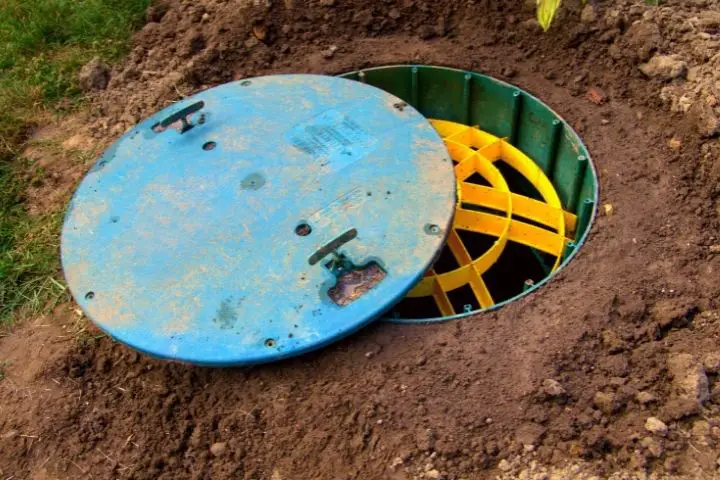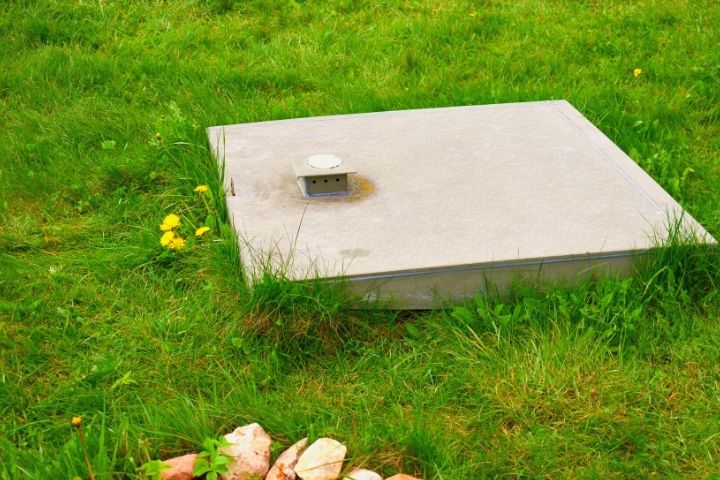How to Find Your Septic Tank: Use These 4 Simple Methods!
Moving into a new house that is not connected to the county’s main sewer system can be a real bummer. This is especially when your septic tank fills up and demands that you urgently empty its contents!
In such cases, how do you find the septic tank?
Well, you can begin by confirming from a septic tank map, searching the local county records, asking around, or even searching for the septic lid the old-fashioned way!
Want to see what I am talking about here?
Then let’s dive in!
4 Ways to Find Your Septic Tank

1. Scour the Paperwork for a Map
This should be your first solution. When you buy or move into a new property, you need to ask for the map showing where the septic tank is.
The good news is that you almost always get one along with the house plan when you buy a new property. So that shouldn’t be a problem.
A good septic tank map contains important details such as well-labelled diagrams showing you the exact spot where the system is dug in and the exact dimensions. These types of information help when measuring the tank’s size and precise location.
It can also help you spot a problem in case there are any heavy structures built or growing on top of your tank.
If you can’t get your hands on this, head straight to your county. Their health departments will always have maps of ALL septic systems in the area. Such as this one!
2. Find the Main Sewer Outlet Lines
First, you have to search and locate where the mainline leaves your house before you can begin your hunt. Most of the time, the main outlet is usually located along the basement walls or under the crawl space.
It’s a 4-inch-wide pipe probably made from heavy PVC material or cast iron.
When you find it, note the point and angle through which it leaves the house as the septic tank is always bound to be just a few feet away. (Mostly downhill.)
You’ll know you’ve found it when you notice some slight depression or sinking not so far away from the main outlet’s point of exit.
Wipe off or dig out the level of soil, rotten leaves, grass and what-not that might cover the lid and say hello to your septic tank.

3. Ask Around
You can begin by asking your neighbors to find out if they’ve been there long enough to see where your house’s septic tank is. Doing this may make the exercise easier, especially if both your houses share the same building design.
And when you think about it, it makes sense. If there was ever a case of a full septic tank, they would have been among the first to sniff it out!
Another great way is to check with the previous owners – if you can – and see if you can get that information from them.
You can also find out from the local septic companies and see if they might’ve unloaded waste from that particular house’s septic tank before.
If all else fails, you can also look up the house’s contractor or search the local county records for the location of your new house’s septic system.
Something’s bound to give from one of the approaches above!
4. Carry Out a Yard Inspection
This is a more mano a mano approach and it involves you literally doing the leg work to find the septic pit’s location.
Under this method, you must keep an eye out for any unusual mounds or depressions on your property. High chances are that the septic tank is either beneath the depression or just beside the mound.
You should also watch out for parched grass as I earlier mentioned. This is an indicator that something below, say a hard slab of concrete, is preventing the roots from growing deeper and trapping the much-needed nutrients and moisture.
Why is it Important to Know the Location of Your Septic Tank?
1. It gives you ease when carrying out maintenance
Right off the bat, knowing where your septic tank gives you a smoother time conducting maintenance.
For instance…
Once you know where your septic tank is, you’d be sure to avoid placing heavy things or building bulky structures above it. Otherwise, the weight and resulting pressure may cause the tank’s cover to sink in and lead to a hazardous leak in your yard.
That said, you should avoid pulling stunts like parking vehicles or organizing get-together barbeque sit-ins on top of a septic tank – if you catch my drift…
2. Helps when you want to change your property’s landscape

While a lot of people may overlook this, you must create a landscape design that takes the position of the septic tank into careful consideration.
“Why?” you ask.
The thing is, some plants have roots that could easily grow into septic pipelines. And when that happens, it only leads to one inevitable disaster – drainage clogs and massive backflows into your main house!
I am sure you don’t want that, do you?
So, to prevent such things from happening, insist on only planting shallow-rooted plants that won’t pose a threat to your septic lines.
3. Makes it easier to fix emerging problems
When you know the location of your septic tank, it becomes really easy to spot and diagnose problems that may arise in your system.
For instance…
When you find a pond of sewer water seeping onto the surface, you can easily pinpoint whether the problem is the piping system or the septic tank itself. Afterwards, getting it fixed would be quick and cost-efficient compared to going into the matter guns blazing.
Also, when deciding between compost toilets vs septic tanks, knowing your tank’s current location could help you discern whether there is enough space to install either of the systems.
So, this really goes a long way…
Frequently Asked Questions

1. How do I know if a previous owner pumped my septic?
You should check in with your area’s local septic company first.
Most of the time, you’ll find that these companies have all the records of the homes they’ve serviced over the years. If your house was part of their roster, then it will be very easy to know the last time that they pumped your septic.
Those types of records can also help you predict when you ought to empty the septic next.
2. Are septic tank locations public records?
Most septic tank locations are in the public record.
This is because before you install your septic system, you will first need to get a permit from the state’s health department. Once granted, the permits will indicate the exact spot where your new septic tank will be set up and its actual size.
The other department that may have information on septic tank locations is the County’s septic service companies. This is because, sooner or later, most homeowners have to contact them to get their septic systems cleaned out. These companies keep all these records in the end and you can go and verify with them anytime should you need to verify your septic’s location.
3. Where are most septic tanks located?
Most septic tanks are located between 5 to 25 feet from the main house.
The systems are usually installed towards the lower end of a slope (if you live on uneven land). You will notice either sparse or dense vegetation growing on top of the septic area in many cases.
Also, you can always use a metal probe to investigate the ground below if you suspect anything unusual about it. 9 out of 10 times the findings will reveal your house’s septic tank.






